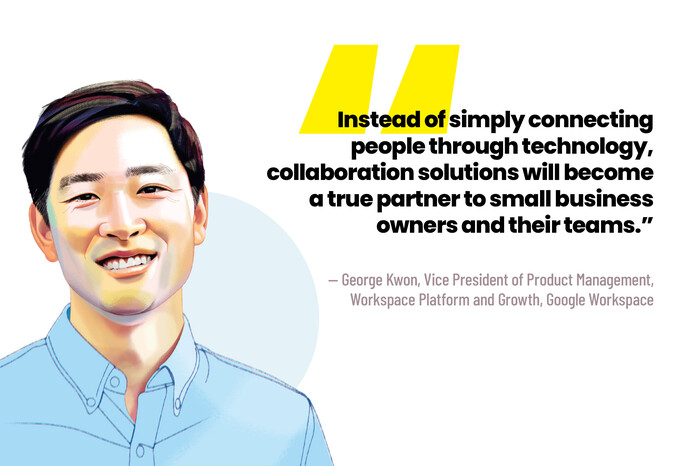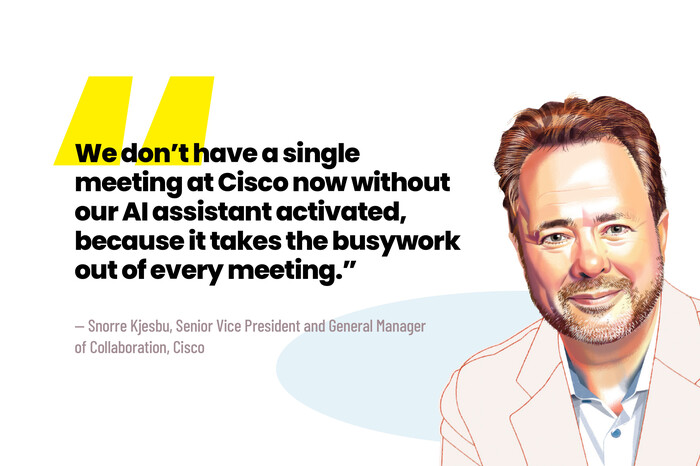BIZTECH: What do you see as the future of collaboration for small businesses?
Kwon: For small-business owners, whose time is their most finite resource, the future of collaboration is about restoring focus by removing complexity. Instead of simply connecting people through technology, collaboration solutions will become a true partner to small-business owners and their teams; think fewer clicks and more connectivity. This kind of workspace holds a deep understanding of a team’s context so it can surface the information team members need, when they need it, making collaboration more seamless.
Kjesbu: The future of collaboration is what we call “distance zero.” The goal is to truly eliminate the impact of physical distance. What we mean by that is, regardless of where you sit, even a small business can hire the best talent from wherever and ensure that everyone is on equal footing, whether they’re joining a meeting from a home office, the office a coffee shop or anywhere in between.
Distance zero means really tearing down the barriers between remote people and those in the office to ensure that everyone has an equal seat at the table. That’s our vision. We’re making it real with innovations like multiple in-room cameras to deliver cinematic meeting experiences and collaboration devices designed for workspaces of all sizes. And it’s all happening with AI at the edge.
















